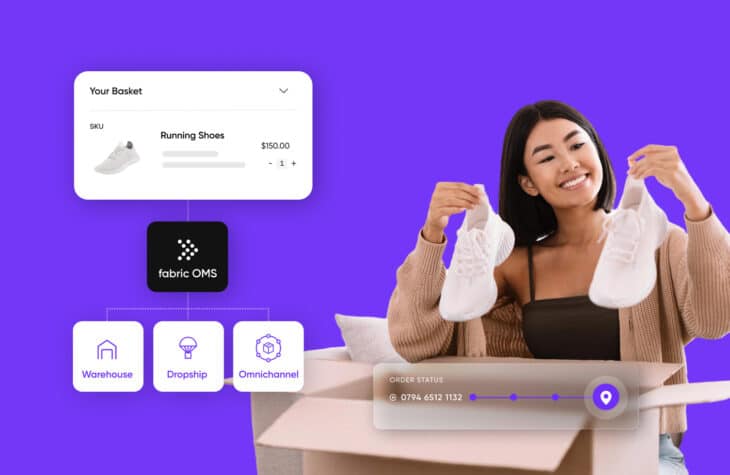The Frictionless Future of Replenishment

The current state of transactional e-commerce is only at the midway point toward the ultimate destination of creating the perfect world of retail. This ultimate destination is a world without ANY friction or ANY work required from the customer.
During my time at Staples, it became clear that the friction that still exists in today’s world of commerce is a particular issue for replenishable products. Amazon currently dominates this space as its unmatched ability to provide fast shipping with low prices makes it the go-to choice for everyday items. But even with all their resources, they have not been able to completely eliminate friction from the buying experience.
In this article, I will take a closer look at how friction remains the core problem for retailers selling commodity products and what innovations can lead us to a frictionless future of commerce.
Here I will solely focus on the physical products that are defined as commodity goods, otherwise referred to as “replenishables”. These are products that solve a problem and are required for the sustainment of life or advancement of a business.
Note: There is a whole different area of commerce focused on “wants”. These are products people buy to complement or serve some higher level of Maslow’s hierarchy of needs (think clothing from a high-end fashion brand or a fine couch from a furniture retailer). Analyzing these “wants” would require a discussion on discovery and inspiration that is outside the scope of this article.
Retail is Logistics
The objective of retail is to find the most efficient method for providing the right products, to the right place, where demand can then be satisfied. To break it down into a simple equation, retail = logistics.
At its core, it is just a matter of moving manufactured products from Point A to Point B, close enough for the consumer to access them. The supply chain is where the retailer takes on the work of getting an item to the customer.
Inventory begins its life cycle as raw materials that are sent to factories to produce a finished good. Finished goods leave factories and move to interim locations: trucks, boats, planes, fulfillment centers, or physical retail stores. Once a product leaves a retail store, it’s unpackaged and used.
Now, if you look at the end-to-end supply chain, the most complexity and cost happen in the movement and holding patterns in warehousing. So what’s the need for all this warehousing?
The problem is that demand forecasting for retailers is an inexact science, to say the least. It’s crude and error-prone. While there is a lot of effort and expenses that go into modeling and shaping demand, you can just look at all of the “warehousing” of goods around the world in boats, containers, warehouses, fulfillment centers, retailer stores, trucks, and just about every nook and cranny under the sun to see that it is ineffective.
How e-commerce has disrupted traditional retail
It’s interesting to note that while the evolution of commerce prescribes removing all work from the customer’s end, traditional retailers have effectively offloaded (or dodged) a great deal of work by only offering inventory management up until the point of the retail store.
By handling the final mile logistics of moving products from a warehouse to their end destination, e-commerce retailers have been able to remove additional friction from the buying experience. This has shifted trillions of dollars in GMV (gross merchandise volume) away from traditional brick and mortar retailers.
I love thinking about e-commerce in this way. E-commerce has disrupted traditional retail by effectively taking on one more unit of work on behalf of the customer. The internet as a platform has given e-commerce companies many other advantages, particularly transparency of information, but logistics are the main differentiator.
In many ways traditional retailers are lazy and that’s what’s causing their demise. Not Amazon. Laziness.
Friction Remains the Core Dilemma for Replenishment
The replenishables market is transactional to its core. The desire of the customer is to simply keep the right products stocked at all times so that the home or office continues to run smoothly without interruption. As such, there is little to no emotional connection to these products. They simply must be available at a moment of need.
This means that consumers are less willing to tolerate any friction when purchasing replenishables when compared to other products. Someone purchasing an item that would be categorized more as a “want” than a “need” will be more willing to accept longer delivery times or a suboptimal shopping experience since what they are buying is not essential to sustaining their life or business.
Despite this, friction is still pervasive across the replenishables market. Companies like Amazon deserve a lot of credit for reducing friction, but there are still many friction-filled experiences today even they have not solved.
Let’s take a look at the most dominant methods of replenishment today and see how friction is still widespread.
- Traditional retail: Today, customers tend to reorder products at physical retail stores as the retail environment remains the most common method of purchasing products in the United States. But for most product categories, it is a friction-filled experience to leave your home or place of work, go to a set location (the retail store), and gather your products.
- E-commerce via mobile and desktop: The next dominant method is to visit an e-commerce website or mobile app and simply repurchase items. While leading e-commerce retailers are fairly easy to use, it still requires effort to search, browse, select products to buy, go to the cart, and checkout. Then, the fulfillment of the request typically takes 1-2 days at best which is sometimes below the minimum bar of the customer’s needs.
- Product subscription services: Paradigms, like subscribe and save, (or auto restock), aim to reduce friction by removing the need to continually visit e-commerce websites, but the model and implementations to date have significant limitations. Amazon has somewhat limited the market potential with their initial clunky implementation of Subscribe and Save, which left a large trail of negative customer perceptions.
Solutions to Removing Friction from Replenishment
In an effort to reduce friction in the replenishment process, leading e-commerce retailers have begun to implement solutions to address the issue. Below are the emerging methods with the biggest impact.
- Voice commerce: Using natural language interfaces is much easier than learning website navigation, keyword searching, adding to cart, and other aspects of the e-commerce experience.
- Chat commerce: Conversational commerce makes reordering products a simple request and response within chat or voice channels.
- IoT sensor-based services: Embedded sensors within replenishable products is the most frictionless option method available today. Amazon’s Dash is the best example, but watch out for other e-commerce retailers to follow their lead as sensors become less expensive.
While these methods reduce the friction of replenishing essential goods, there are additional solutions left to be discovered, and those who find them will reap the rewards.
Unsurprisingly, Amazon is front and center with its efforts to distribute inventory closer to the customer by opening 1,000 small delivery hubs in cities and suburbs around the country. The goal is to provide same-day delivery for replenishable products.
In the future, we could see Amazon mini-warehouses just outside of suburban neighborhoods filled with 10,000+ common household items and groceries. Robots could then be deployed daily to easily fulfill orders within hours.
Another area that could make a major impact is the use of computer vision to proactively predict demand before it arises. Imagine something similar to Ring’s security drone flying around your house and taking a snapshot of all your replenishable products. When it sees something out of stock, it builds a list and you can confirm the reorder.
Conclusion
This analysis of the future of replenishment assumes that no other technology is invented that removes the majority of logistics from retail. After all, retail is logistics so this would result in a fundamental change in how retailers conduct their business.
That said, there is a series of technology innovations that are indeed in progress! These tend to be lumped into a category called additive manufacturing or, more commonly, 3D printing. With these technologies, customers wouldn’t rely on a retailer to handle the logistics of providing their needs as everything would be produced nearby and on-demand.
While this would undoubtedly reshape the world’s supply chain, it is unclear how long it will take to be fully realized. For now, retailers need to take on every possible unit of work on behalf of customers until there is no gap between need and fulfillment. By doing so, we will continue to move closer to a perfect world of retail.
To help retailers with this, we created fabric, a suite of core commerce modules that retailers can integrate with existing systems to streamline logistics and improve the buying experience.

Co-founder @ fabric. Previously general manager @ Staples, eBay, and Dell Inc.





